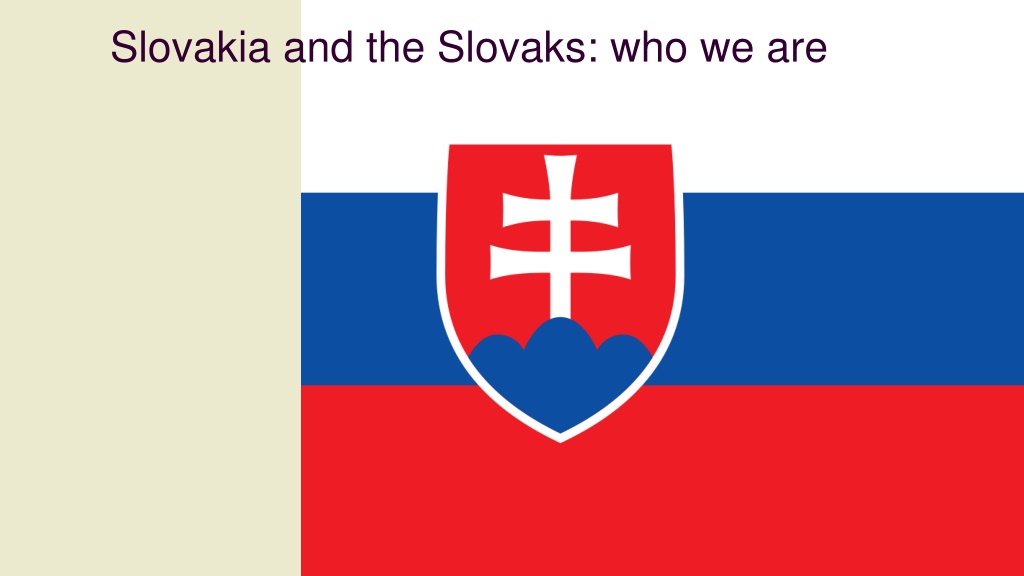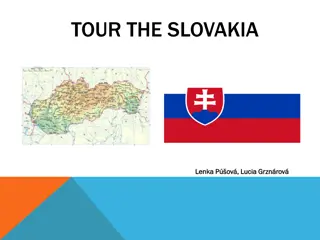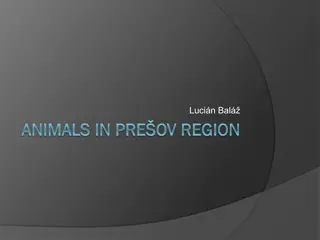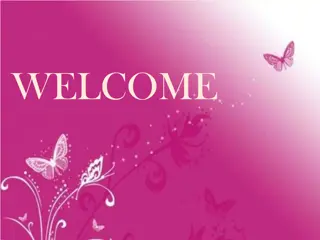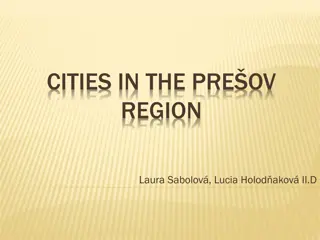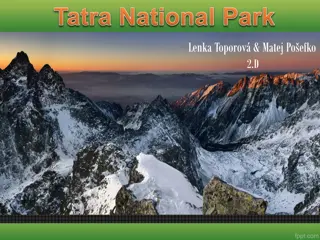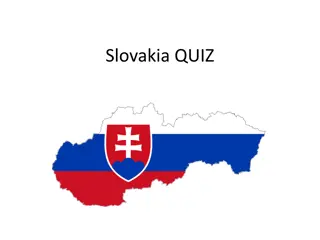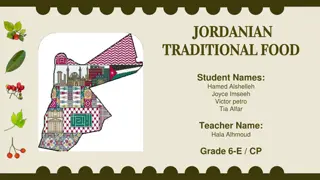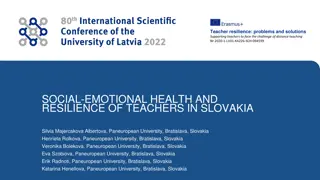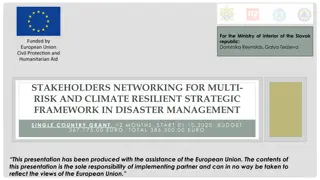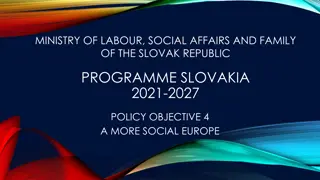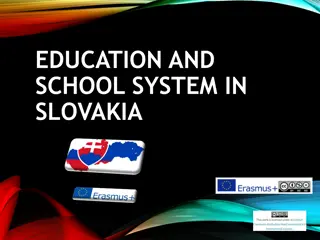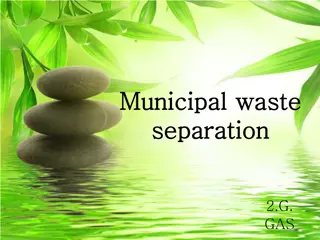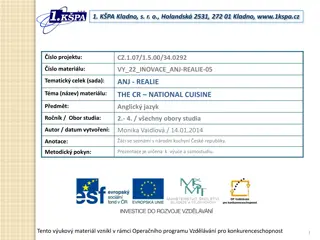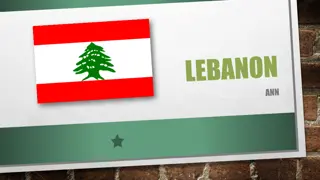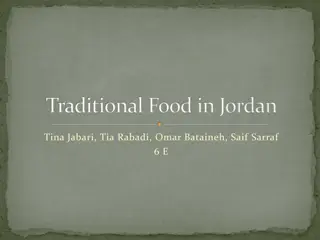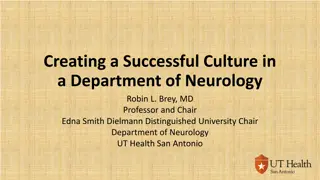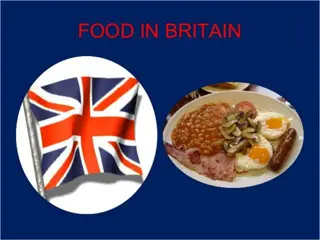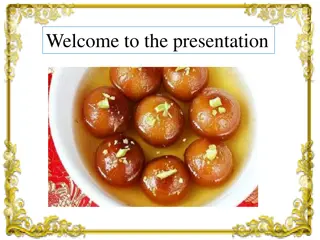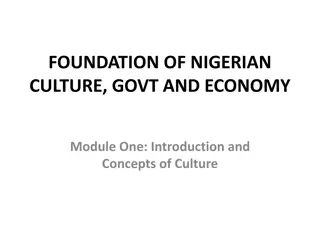Explore the Rich Culture and Cuisine of Slovakia
Discover the emotional and friendly nature of the Slovak people, their traditional cuisine featuring potato dumplings and sauerkraut soup, as well as festive dishes for Christmas. Learn about Slovakia's historical influence and its unique position as a bridge between Western and Eastern cultures.
Download Presentation

Please find below an Image/Link to download the presentation.
The content on the website is provided AS IS for your information and personal use only. It may not be sold, licensed, or shared on other websites without obtaining consent from the author. Download presentation by click this link. If you encounter any issues during the download, it is possible that the publisher has removed the file from their server.
E N D
Presentation Transcript
Slovaks are emotional nation. We experience our joys, successes, disappointments and sorrows with emotions. We are sincere, friendly, open, hearty, generous, but also touchy. Folk crafts, costumes, music and dances in Slovakia are passed on from one generation to another. There are different cultural traditions and folklore in every valley. Slovakia is a young, progressive country. During almost three decades of its existence we've gone through dynamic changes, new things emerge every day. We surprise the world by our advanced technical level which goes hand in hand with human touch. New companies are founded every day, new objects or city landmarks emerge, life conditions are improving, but we keep our traditional values as well. This is Slovakia.
BASIC FACTS ABOUT OUR CUISINE o Slovak cuisine is historically known mainly by pork, lamb, potatoes, cabbage and milk products o It is influenced by the Czech, Austrian and Hungarian cuisine o The most traditional food in Slovakia are POTATO DUMPLINGS WITH SHEEP CHEESE SAUCE AND BACON o Other traditional dishes are SAUERKRAUT SOUP, LENTIL BROTH, GOULASH, NOODLES WITH POPPY, POTATO PANCAKES, RICE PUDDING, STUFFED PEPPERS .
POTATO DUMPLINGS o In Slovakia we call them ,,halu ky o The most famous are dumplings with sheep cheese, which gives them an exceptional taste o The main ingredients are potatoes, flour and salt o It can also be given with a glass of sour milk called ,, in ica"
TRADITIONAL FOOD FOR CHRISTMAS o In Slovakia, sauerkraut soup is the most traditional soup for Christmas o Sauerkraut soup is made of cabbage and mushrooms o The traditional main dish for Christmas is fried fish and potato salad with mayonnaise o Another very famous sweet dish is ,,opekance" we can eat them with poppy seeds or cottage cheese o The most famous cake for Christmas is ,,Viano ka" it is a special cake made from yeast
Slovakia as a castle superpower
. Thanks to its position in the centre of Europe, the cultures of the West and East have met in Slovakia over a history spanning several thousands of years. From Celtic settlements, through the remains of Roman fortifications, ancient Slavic cult places, manors and fortified castles of the Ugrian nobility, medieval mining towns, German settlers, the easternmost Gothic sites in Europe, Renaissance and Baroque palaces, Greek Catholic and Orthodox wooden churches, Jewish synagogues and cemeteries, and the interwar functionalism and socialist realism of expanding cities to current projects reflecting the latest trends. Bratislava castle
The history of our castles dates back to the 9th century, when the Slavs began to build wooden fortifications on the territory of today's Slovakia During the 11th century, stone fortifications began to replace them. The castles in Bratislava, Nitra and Tren n were one of the first replaced fortifications. At the end of the 13th century, around 150 castles were built in our territory. Bojnice castle
Nitra castle Spi castle
In the 20th century, the reconstruction of several castles began. During the reconstruction of the castles, their use for cultural purposes was also found. Castles are big part of the tourism. Currently, there are about 100 castles and ruins in Slovakia, for example: ubov a castle, Spis castle, Orava castle, Bojnice castle, ... Tren n castle
ubova castle Orava castle
WATER Lakes and rivers We have a lot of lakes which were used for mining, but today we use them for recreation and fishing. We use our rivers for electrical energy and transportation. Mineral waters Mineral waters in Slovakia are of high quality because they contain many minerals like sodium , calcium and iron. In every supermarket you can find many different brands of mineral water which are fresh because their springs are deeper than 2 kilometers. Thermal waters Thermal waters are everywhere around our country and, of course, we use some of them as healing spas. Thermal waters help people with arthritis and heart problems and various other health issues.
ROCKS Caves In Slovakia we have approx. 7000 caves. They have been continually growing for millions of years. We find 2 new caves per year. Precious metals Gold in Slovakia - we mined 166,000 tons of gold and we mine it till today. Silver was also successful because we mined 1,411,000 tons of it Copper wasn t so successful but we mined approx. 300 tons. Stones Opal is mined in the east of our country. Amethyst was rare because it was dark, big and without cracks Quartz was very successful and sometimes you can see caves full of it.
Folklore Folklore began between shepherds and people working in the fields. They sang songs to make time go faster at work. Slovakia is very rich in folklore, habits and traditions . Parts of folklore are passed down from generation to generation. Every region have own typcal folklore, habits and special clothes. There are currently 26 folk costume areas in Slovakia with typical embroidery motives and approximately 60 variants of folk costumes.
Folklore festivals Folklore festivals are events where each region present their own folklore , habits and costumes. The most important folklore festivals in Slovakia are : Folklore festival V chodn Folklore festival Pod Po anou in Detva J no k's days in Terchov Myjava International Folklore Festival
Instruments in Slovakia Slovakian traditional musical instruments are the accordion , dulcimer, bagpipes and different types of whistles. The rarest is Fujara. Fujara is a Slovak folk wooden wind instrument. It was used at sheep grazing.
Handicrafts preserved to the present day
There are many skilled people living in Slovakia and always were. Their handicrafts have been preserved to the present day and several of them are globally unique. Wear Liptov lace, have your pots repaired by a tinker, discover skills of Slovak bee-keepers or wood-carvers.
Mining In the oldest written documents our town- tiavnica used to be called Bana and the land surrounding it The Land of Miners. Everything in this place is connected to mining. The town as well as mountains around the area have been pierced by mining tunnels like Emmental. There are thousands of kilometres of mining tunnels. At the time of the greatest boom of mining, around 24 thousand people lived here. The Land of Miners achieved several first places. It was the first place to use gun powder for blasting rocks. It was here that one of the most sophisticated hydro-power systems tajchy of tiavnica was developed. It was the location of the first technology-focused university in the world
Tinkering Tinkering was a specific Slovak craft and Slovak tinkers, who made their living by mending the kitchen ware, tinkering, making and selling products from tinplate and wires, travelled all over Europe and Russia. Tinkers created their own folklore which included, apart from songs, an interesting dance called drot ri ek, known especially in the Kysuce region.
Wood carving The wood carving craft, which involves decorating wooden objects by carving, engraving, sawing, sharpening, beating, burning and other techniques as well as making various objects of art from wood, became one of the most exquisit crafts in Slovakia. New craft carving of Christmas cribs has found its way in Slovakia. The beautiful and various products of wood-carving can be seen at folk and historical markets and are counted among popular Slovak souvenirs.
Lace-making Lace became the typical adornment of clothes, accessories, handkerchiefs and other decoration objects on the territory of Slovakia where it was given its characteristic features. From 17th century lace-making developed especially in the mining regions as an important supplementary occupation. Among the most important centres of this craft are the environs of Bansk Bystrica, Bansk tiavnica, Kremnica and Pre ov.
Easter whipping or bathing This custom, spread all over the territory of Slovakia, is known in villages as well as in towns and is performed on the last day of Easter - Easter Monday. Easter Monday is associated with the custom of bathing or sprinkling with water and whipping girls and women. The traditional reward for whipping or bathing is a decorated egg called kraslica - a symbol of new life.
Putting up of the maypoles (1st May) In general, the month of May is considered to be the time of love and new life. The May greenery used to be the symbol of energy and good growth. The most important place among plants belonged to the tree which in these circumstances was called the maypole. The maypole was usually put up by a young man for the girl he loved. Their tops were decorated with colourful ribbons.
Midsummer Nights Bonfires In summer many customs concentrated on protection against evil forces that might have harmed vegetation and livestock. The culmination point of this magic time was the Midsummer Night (23rd - 24th June night) which involved customs whose origins go back to the pre-Christian era. Some forms of this custom, especially making bonfires above villages, have been preserved till nowadays. The Midsummer Day is the longest day of the year. Most attention was paid to fire. One of the traditions was making huge bonfires on a place clearly seen from the village, launching fire wheels, tossing burning torches, singing, dancing and jumping over the bonfire.
